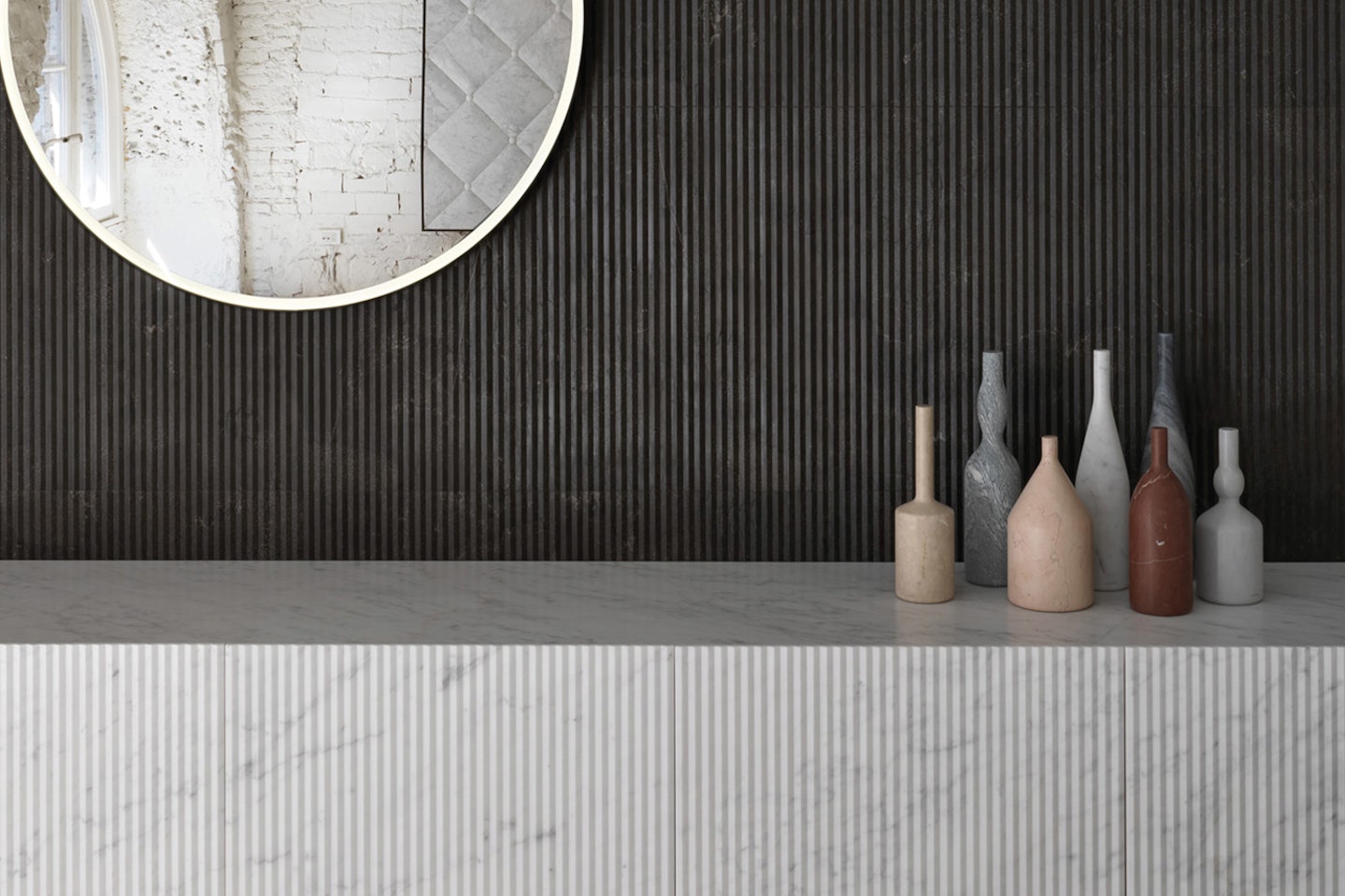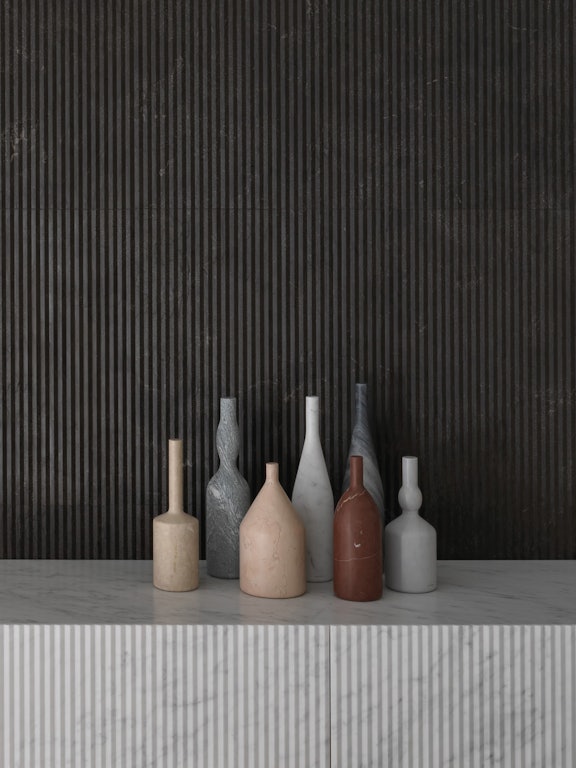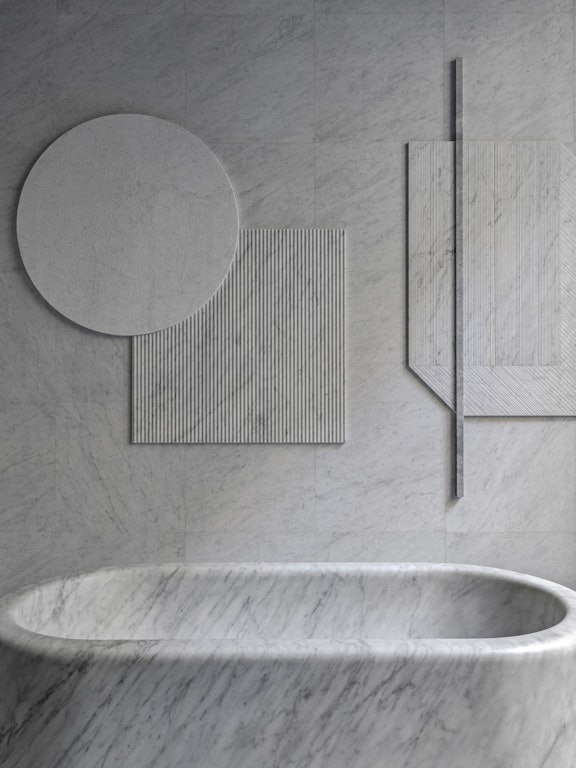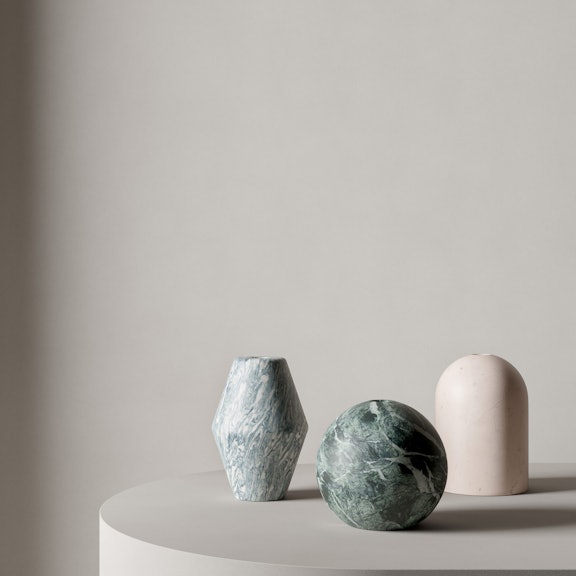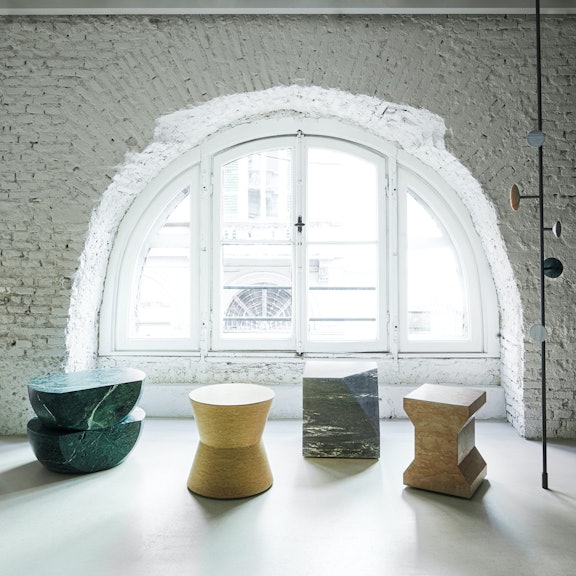Omaggio a Morandi: the essence of craftsmanship
03.2022
A cold material, it can be transformed in a way that transmits warmth and soul
The relationship between craftsmanship and design has changed in recent years. With the industry moving inexorably towards an ever greater degree of mechanisation, implementing technologies like artificial intelligence and new, sophisticated materials, the values of craftsmanship – of working by hand, using techniques handed down through centuries – has taken on a new significance. In an era of mass production and uniformity, craftsmanship creates unique products that form a dialogue between the customer and the artisan who produced them, coming to represent a tangible expression of experience and skill.
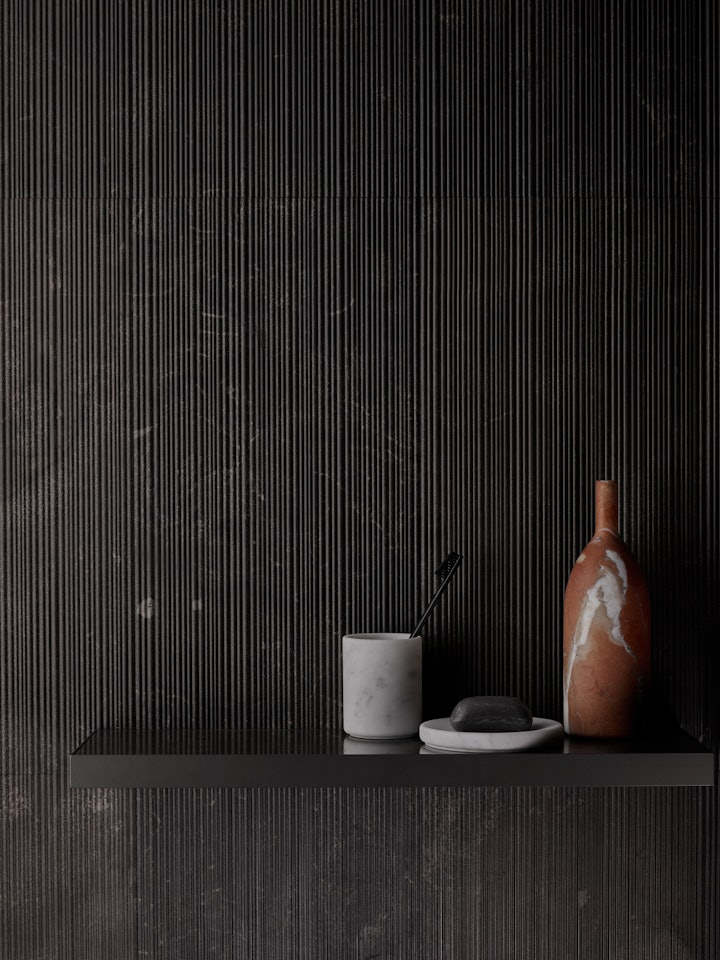
This is particularly true of Elisa Ossino’s Omaggio a Morandi, a series of stone bottles inspired by the subtle, contemplative still life paintings by the Italian artist Giorgio Morandi. Carved from seven different natural stones, the series translates Morandi’s curiously expressive glass bottles, porcelain jugs, pots and cups from canvas into three dimensions, realising his singular vision in stone. “I didn’t want to create an object that had a function, like a vase,” Ossino says of the inspiration behind the series. “Instead I wanted to pay homage to this great artist by creating sculptures from the objects he used in his still lifes.”
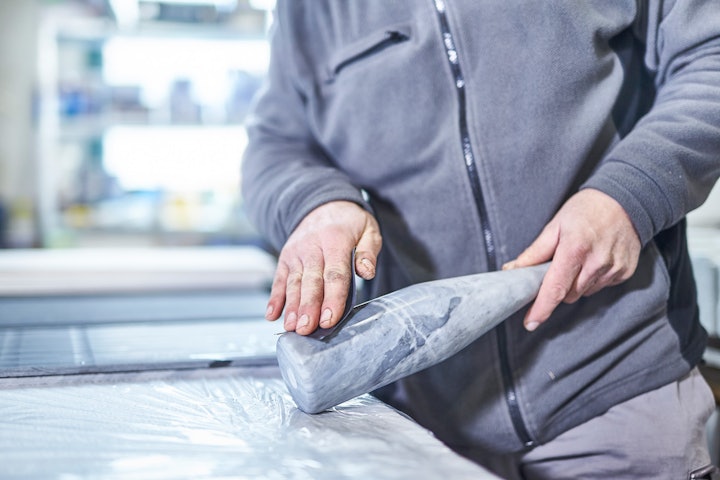
It takes three hours to create each bottle. First the raw stone has to be carefully selected, making sure it is free of defects that could cause breakages, and that the block is suitable for the shape of the bottle. “You have to have an affinity with the stone,” explains one of the craftsmen at the Salvatori factory. “It’s almost a sixth sense, when you’re choosing the piece – an understanding of its potential, how the veining and colouration will affect the final form.” Then a special drill is used to carve a cylinder from the rectangular block, before the rough form of the bottle is shaped on a lathe using a CNC machine, and finished by hand using various grades of abrasive paper.
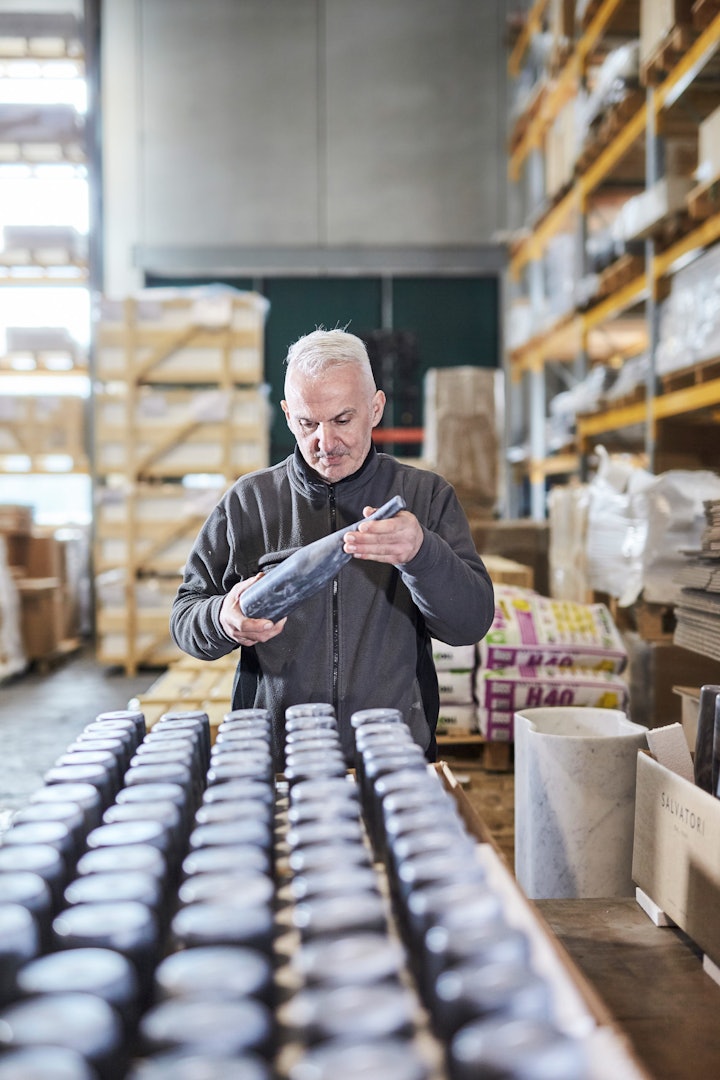
“Without the hand finishing you have an object that is still quite rough and generic,” continues the craftsman. “It’s the knowledge and instinctive feeling when you touch the stone that makes the difference – how you form the smooth edges, find the perfect balance in each bottle.” Just as Morandi created an enduring and enigmatic beauty from the forms of prosaic, utilitarian objects he painted, so too do our craftsmen, from solid, impassive blocks of stone, cut their own considered, elegant interpretations of the artist’s work. It’s a feat that, despite the importance of high-tech equipment, can only be achieved with an intimate, instinctive understanding of the material.
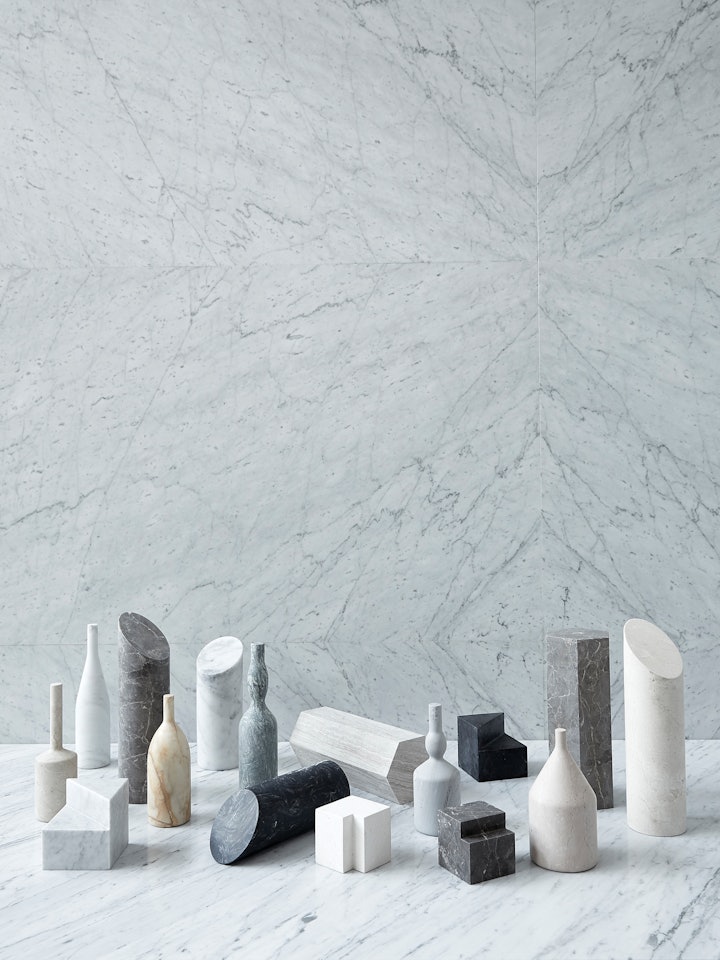
As the craftsman says, “even though stone could be described as a cold material, it can be transformed in a way that transmits warmth and soul. This isn’t something that can be taught – you have to love and understand stone.”
At Salvatori, a tradition of craftsmanship and experience, established and developed through three generations, goes hand-in-hand with cutting-edge technology that is developed in house. Our natural stone textures, collections for the home and bathroom – the trays and tables, basins and bathtubs, produced in collaboration with architects and designers – and our industry-leading innovations like Lithoverde®, the first fully recycled stone surface, have often been enabled by new technologies, but these designs can only be truly realised through craftsmanship, which remains at the heart of Salvatori.
